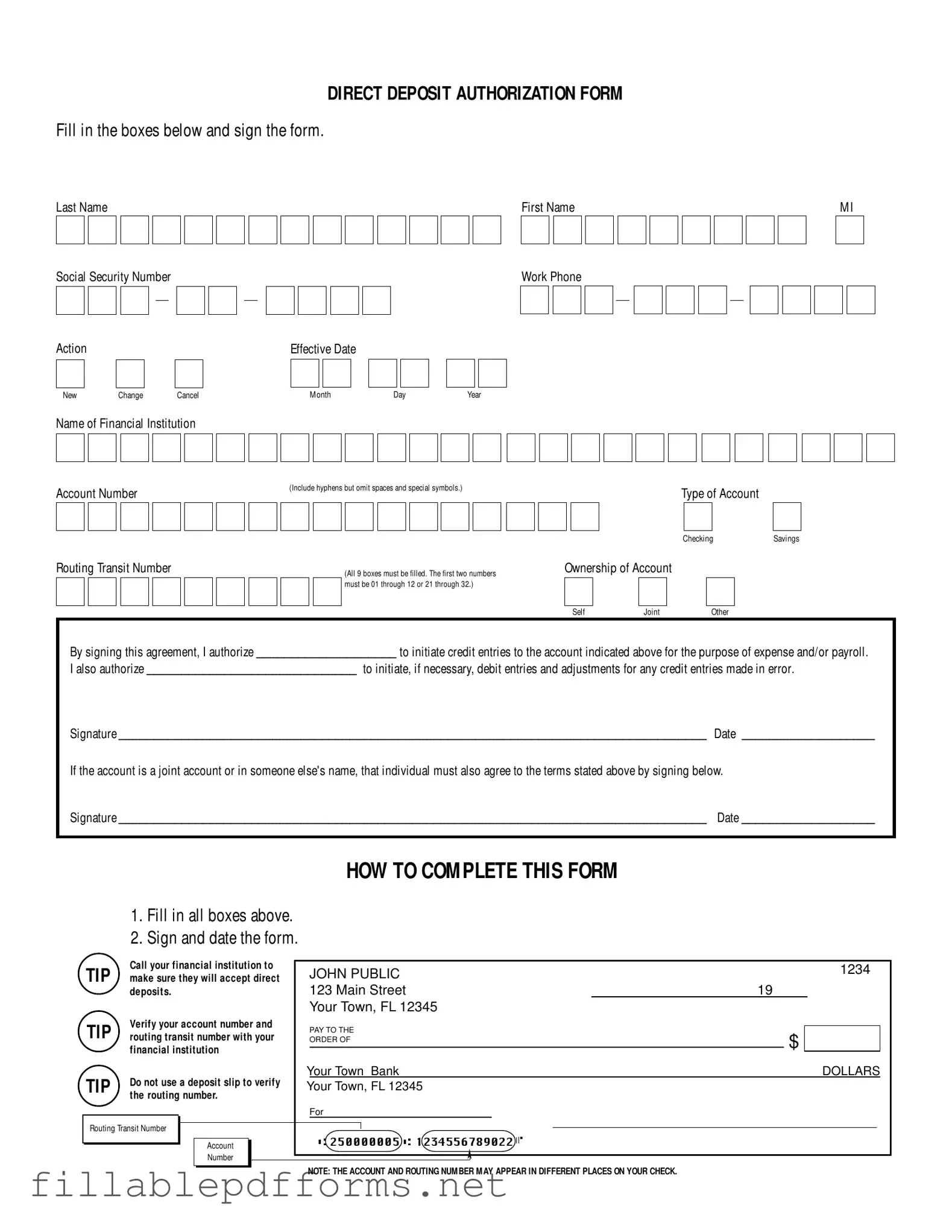The Generic Direct Deposit form is a straightforward yet essential tool for individuals looking to streamline their financial transactions. This form allows users to authorize their employer or another payer to deposit funds directly into their bank account, eliminating the need for paper checks. Key components of the form include personal information such as the individual's name, Social Security number, and contact details. Users must indicate whether they are setting up a new direct deposit, changing an existing one, or canceling a prior authorization. Additionally, the form requires details about the financial institution, including the account number and routing transit number, which are crucial for ensuring accurate deposits. The type of account—whether checking or savings—must also be specified. Signatures from both the account holder and any joint account holders are necessary to validate the agreement. Clear instructions guide users through the completion process, emphasizing the importance of verifying account details with the financial institution to avoid errors. This form not only simplifies the payment process but also enhances security and convenience for all parties involved.
